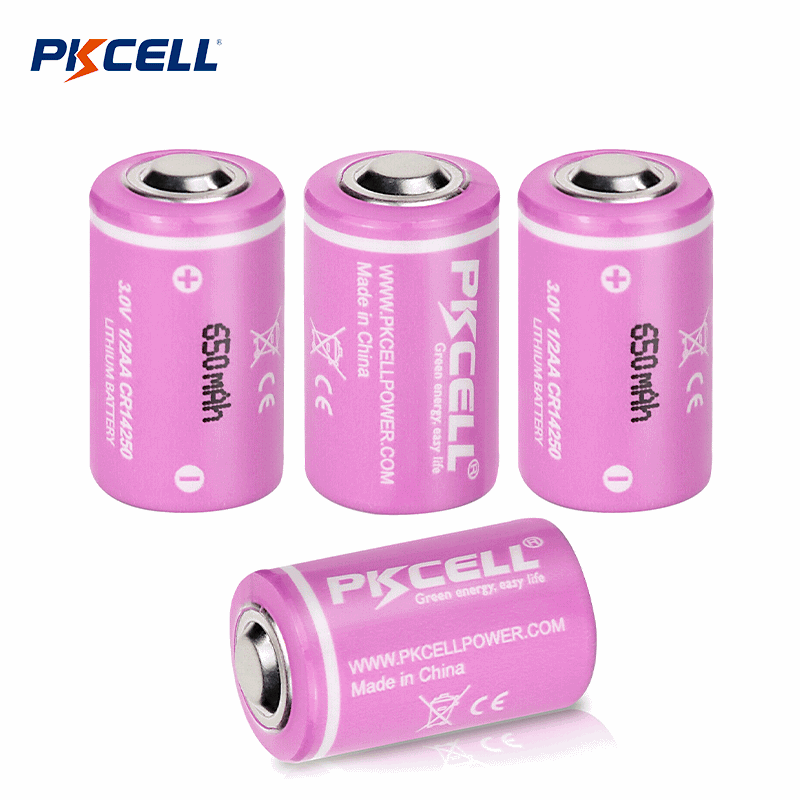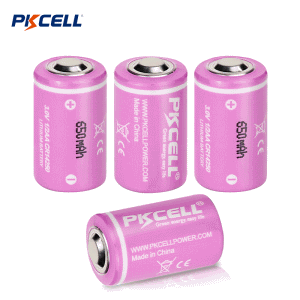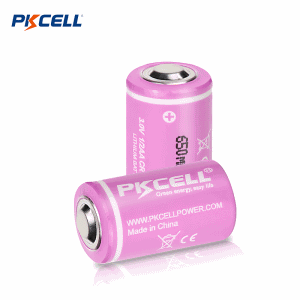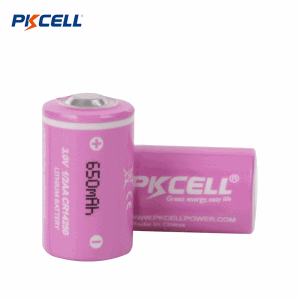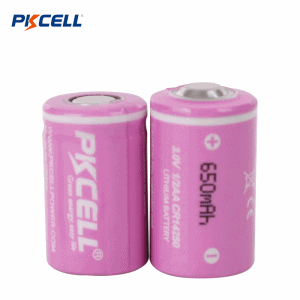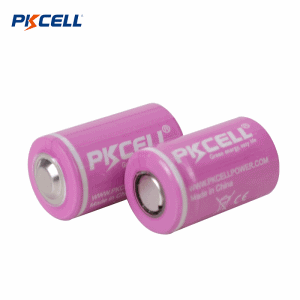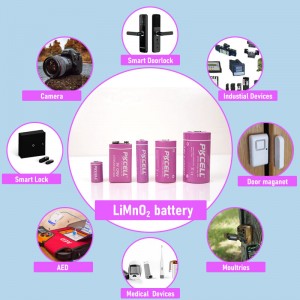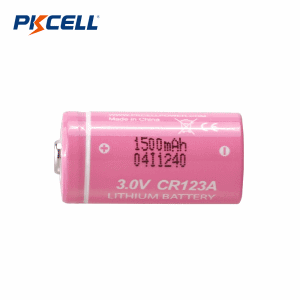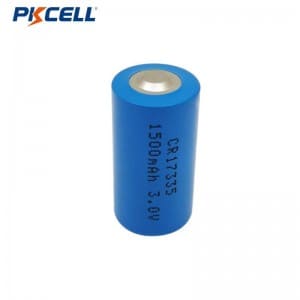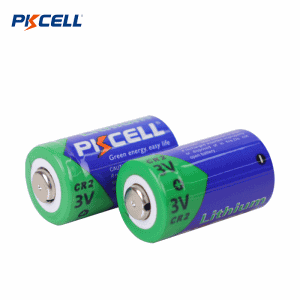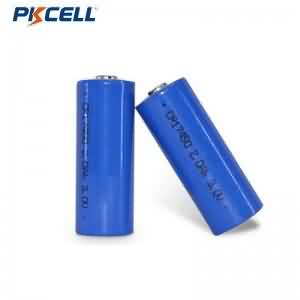3V CR14250 Li-MnO2 Battery (650mAh)
Understanding CR14250 Battery
The CR14250 battery is a compact, 3-volt primary battery. It has high energy density and long operational life. This 3v battery is a reliable power source, offering a stable voltage output over an extended period and across a wide range of temperatures. Due to its miniature size and robust performance, the CR 14250 is widely utilized in applications such as real-time clock (RTC) backup in computers and industrial equipment, security sensors, medical devices, and various compact electronic instruments where consistent, long-term power in a small form factor is critical.
Key Features of Pkcell CR14250
- High Energy Density
- High Open-Circuit Voltage
- Wide Range of Operating Temperatures
- Stable Operating Voltage and Current
- Long Operating Time
- Low Self-Discharge Rate (less than 1% per year at 25ºC)
Main Applications of Pkcell CR14250
- Utility Metering
- Security Systems
- Asset Tracking & Logistics
- Medical Devices
- Memory Backup
- Remote Monitoring & Telemetry
Specification Of Other LiMnO2 Button Cell Battery
| Cylindrical LiMnO2 Battery | ||||||||
|---|---|---|---|---|---|---|---|---|
| Model | Nominal Voltage (V) | Nominal Capacity (mAh) | Standard Discharge Current (mA) | End Voltage (V) | Max. Diameter (mm) | Max. Height (mm) | Reference Weight (g) | Test Temperature (°C) |
| CR17345(CR123A) | 3v | 1500.0 | 10 | 2 | 17.0 | 34.5 | 16 | 23±3 |
| 3v | 1600.0 | 10 | 2 | 17.0 | 34.5 | 16 | 23±3 | |
| 3v | 1700.0 | 10 | 2 | 17.0 | 34.5 | 16 | 23±3 | |
| 3v | 2100.0 | 10 | 2 | 17.0 | 34.5 | 16 | 23±3 | |
| CR15H270(CR2) | 3v | 850.0 | 10 | 2 | 15.6 | 27.0 | 11 | 23±3 |
| 3v | 1000 | 10 | 2 | 15.6 | 27.0 | 11 | 23±3 | |
| CR17335 | 3v | 1500.0 | 10 | 2 | 17.0 | 33.5 | 16 | 23±3 |
| CR14250 | 3v | 650.0 | 10 | 2 | 14.5 | 25.0 | 10 | 23±3 |
| 3v | 900 | 10 | 2 | 14.5 | 25.0 | 10 | 23±3 | |
| 3v | 1050 | 10 | 2 | 14.5 | 25.0 | 10 | 23±3 | |
| CR14505 | 3v | 1400.0 | 10 | 2 | 14.5 | 50.5 | 17 | 23±3 |
| CR14335 | 3v | 800.0 | 10 | 2 | 14.5 | 33.5 | 13 | 23±3 |
| CR17450 | 3v | 2000.0 | 10 | 2 | 17.0 | 45.0 | 25 | 23±3 |
| CR17450 | 3v | 2400.0 | 10 | 2 | 17.0 | 45.0 | 25 | 23±3 |
| CR17505 | 3v | 2300.0 | 10 | 2 | 17.0 | 50.5 | 28 | 23±3 |
| 3v | 2800.0 | 10 | 2 | 17.0 | 50.5 | 28 | 23±3 | |
| CR18505 | 3v | 2500 | 10 | 2 | 18.5 | 50.5 | 35 | 20±3 |
| CR11108(CR1/3N) | 3v | 170.0 | 1 | 2 | 11.6 | 10.8 | 3.3 | 23±3 |
| CR-V3 | 6v | 3000.0 | 20 | 2 | 29X14.5X52 | 34 | 23±3 | |
| CR9V | 9v | 1200 | 1 | 5.4 | 48.5X36.5X17.5 | 29 | 23±2 | |
| CR26500 | 3v | 5400 | 10 | 2 | 26.5 | 50.5 | 62 | 20±3 |
| CR34615 | 3v | 12000 | 10 | 2 | 34 | 61.5 | 125 | 20±3 |
| CR-P2 | 6v | 1200 | 10 | 4 | 34.8X35.8X19.5 | 34 | 23±3 | |
| 6v | 1400.0 | 10 | 4 | 34.8X35.8X19.5 | 34 | 23±3 | ||
| 2CR5 | 6v | 1400.0 | 10 | 4 | 34X45X17 | 34 | 23±3 | |
More Than Just Individual Cells - We Also Offer CR Cylindrical Batteries with Different Terminations
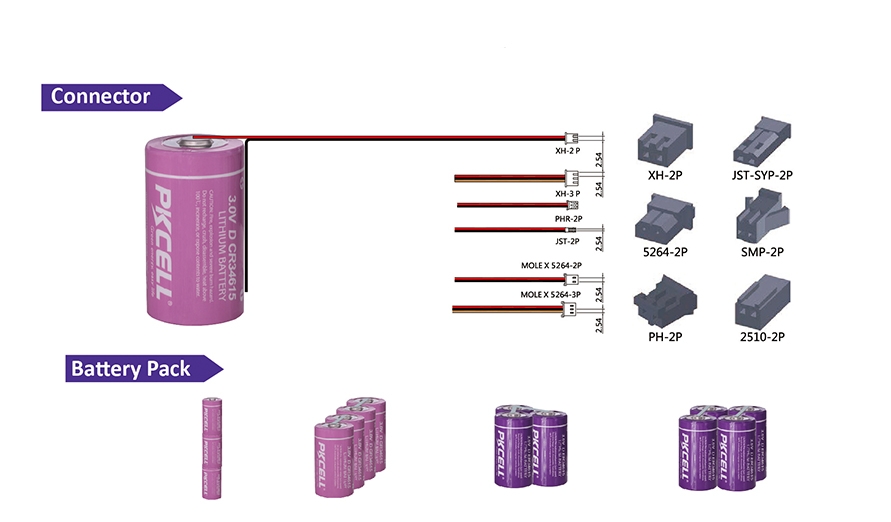
Why Choose Pkcell Battery?
Typical Discharge Characteristics
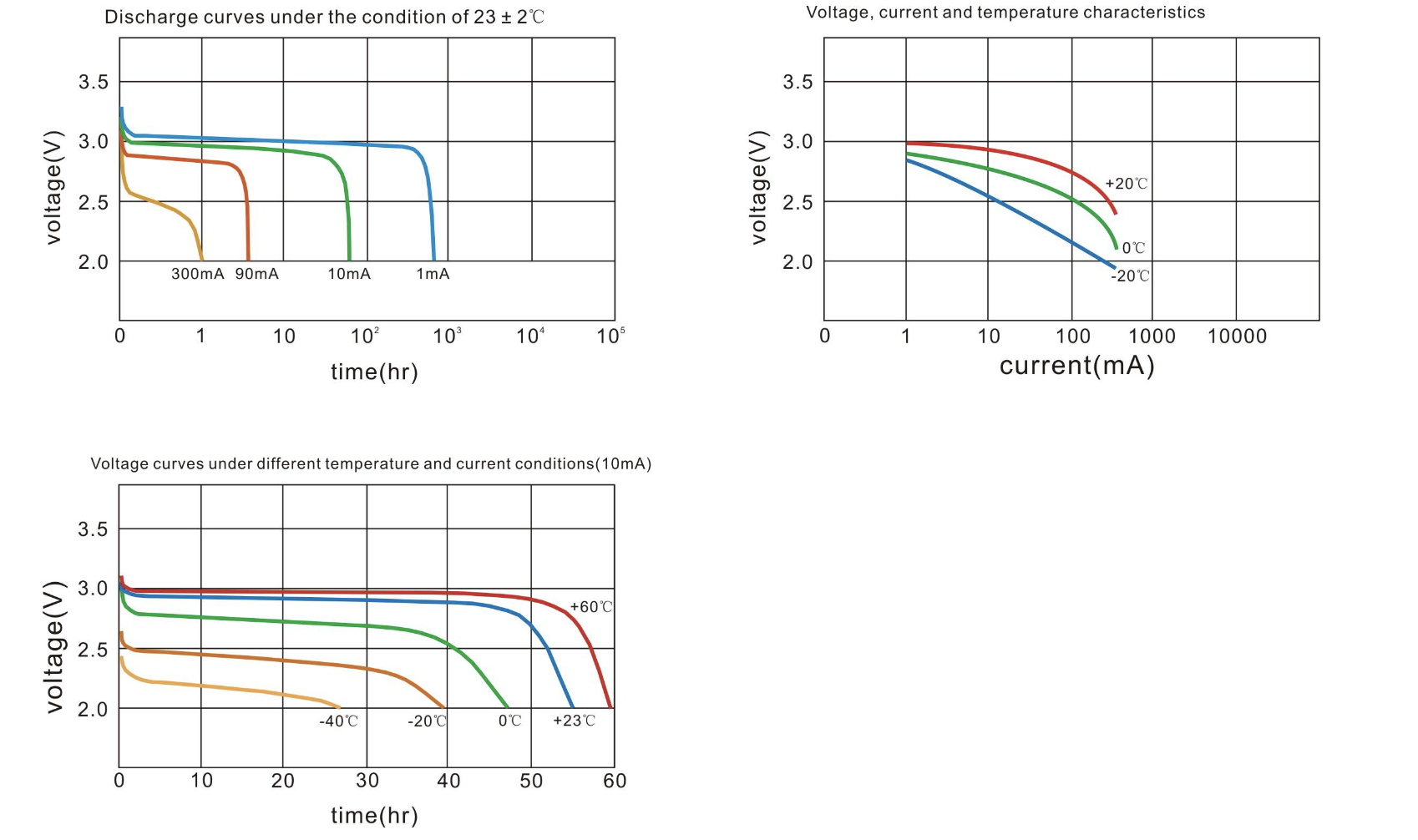
Warning:
- Do not short-circuit, recharge, heat, disassemble
- Do not force-discharge.
- Do not make the anode and the cathode reversed
- Do not solder directly
Frequently Asked About CR14250 LiMnO2 Cylindrical Battery
- Lead Time: Standard samples typically arrive in 7-12 days. Formal orders usually take around 25 days, though smaller quantities might ship faster, potentially within 15-18 days.
- Payment Methods: We accept various payment types, including T/T (Telegraphic Transfer), L/C (Letter of Credit), and PayPal.
- Shipping: We offer flexibility! Depending on your needs and location, we can ship your order via air freight (using carriers like FEDEX, DHL, UPS, EMS, etc.) or via sea freight.
- Delivery Terms: We can work with several common international shipping terms, including EXW, FCA, FOB, CFR, and DDU.
We have a minimum order value of USD $500. The actual quantity you receive depends on the unit price of the specific batteries you choose. Absolutely! We understand you need to test our products. We're happy to provide samples for your evaluation before you place a formal order.
-
Advantages of LiMnO2 (vs. LiSOCl2):
- Generally safer with better thermal stability.
- Lower cost.
- Less noticeable voltage delay/passivation effect.
- Often, better pulse discharge capability (depending on construction).
-
Disadvantages of LiMnO2 (vs. LiSOCl2):
- Lower energy density (less capacity for the size/weight).
- Lower nominal voltage (3.0V vs. 3.6V).
- Less stable/flat discharge voltage curve.
- Reduced performance at extremely low temperatures compared to LiSOCl2.
Yes, we support the customization of CR batteries for product integration. This includes adding solder tabs and pins according to your specific requirements.
No, the CR14250 is a primary (non-rechargeable) battery. It's designed for single use only, and attempting to recharge it is extremely dangerous. It can lead to severe hazards, including fire or explosion. It also cannot be used to replace a standard AA battery; it has a different physical size and a higher nominal voltage of 3V, which would damage a device designed for a 1.5V AA cell.
The primary difference is the battery chemistry. The CR14250 uses Lithium Manganese Dioxide (Li-MnO₂) chemistry, which is generally better for moderate, continuous discharge and some pulse capabilities. The ER14250 uses Lithium Thionyl Chloride (Li-SOCl₂) chemistry, which is known for its extremely low self-discharge and excellent performance in low-drain applications, often with a slightly higher 3.6V nominal voltage. While they share the same dimensions, their performance profiles are different, and they are not interchangeable.
While generally safe when used correctly, proper handling is crucial. To ensure safety, you should:
- Never try to recharge the battery.
- Do not short-circuit the terminals.
- Avoid puncturing, crushing, or disassembling the cell.
- Keep it away from open flames and extreme heat beyond its specified operating temperature.
- Dispose of used or damaged batteries properly according to local regulations for lithium batteries.


